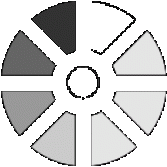USA Career Guide- Airline and Commercial Pilots
Education needed to be Airline and Commercial Pilot
To be a pilot for hire, you need an associate’s or bachelor’s degree from a civilian flying school certified by Federal Aviation Administration (FAA). most airline companies require at least 2 years of college and prefer to hire college graduates. In fact, most pilots today have a bachelor’s degree.
Once hired by an airline, new pilots undergo additional company training that usually includes 6-8 weeks of ground school and 25 hours of additional flight time. After they finish this training, airline pilots must keep their certification by attending training once or twice a year.
New employees usually start as first officers, or fly less sophisticated equipment.
Liscense
All pilots who are paid to transport passengers or cargo must have a commercial pilot's license. To qualify for this license, applicants must be at least 18 years old and have at least 250 hours of flight experience.
Pay of Airline and Commercial Pilot
Commercial airline pilots earn a comfortable living, but they do work long hours and spend a great deal of time away from home. According to the Bureau of Labor Statistics, airline pilots, copilots and flight engineers earned an annual median salary of $103,210 as of May 2010.
Annual Wages of Airline &Commercial Pilot Industry wise- Aerospace product and parts manufacturing
$98,640
- Nonscheduled air transportation
$68,720
- Other ambulatory health care services
$64,130
- Support activities for air transportation (including airports)
$ 57,550
- Technical and trade schools
$57,080
Source:Bureau of Labor Statistics, U.S. Department of Labor, Occupational Outlook Handbook, 2012-13 EditionAirline pilots receive an expense allowance, or “per diem,” for every hour they are away from home, and they may earn extra pay for international flights. Airline pilots also are eligible for health insurance and retirement benefits and their immediate families usually are entitled to free or reduced-fare flights.
Job Prospects of Airline and Commercial Pilot
Employment of airline and commercial pilots is projected to grow 11 percent from 2010 to 2020, about as fast as the average for all occupations. Modest employment growth is expected as air travel gradually increases over the decade and as more travel takes place between Asia and the United States.
Job opportunities will be spread among both passenger and cargo airline companies. However, employment growth may be tempered if airline companies raise prices to pay for higher taxes and fuel costs.
Industrial Overview of Airline and Commercial Pilot
Pilots held about 103,500 civilian jobs in 2010. About 68 percent worked as airline pilots and 32 percent worked as commercial pilots. In 2010, most airline pilots—about 85 percent—worked for airline companies; the remainder worked for the federal government or express delivery companies. Commercial pilots are typically employed by charter companies, private businesses, flight schools, and hospitals.
Industries Employed the Largest Numbers of Commercial Pilots (May 2010)- Nonscheduled air transportation
31%
- Technical and trade schools
13%
- Support activities for air transportation (including airports)
8%
- Other ambulatory health care services
6%
- Aerospace product and parts manufacturing
3%
Source: Bureau of Labor Statistics, U.S. Department of Labor, Occupational Outlook Handbook, 2012-13 Edition
 Processing...
Processing...
 Processing...
Processing...